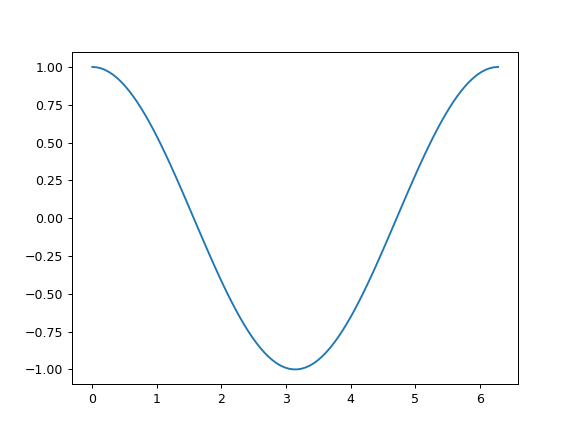Examples
Short examples about how to achieve certain tasks with sphinx-codeautolink.
Basic use
Once sphinx-codeautolink has been enabled, code in all Python code blocks will be analysed and linked to known reference documentation entries.
import lib
knight = lib.Knight()
while knight.limbs >= 0:
print(knight.taunt())
knight.scratch()
Different import styles are supported, along with all Python syntax.
Star imports might be particularly handy in code examples.
Doctest and console blocks using .. code:: pycon work too.
Including code via literalinclude requires using a
:language: py parameter.
A list of all code examples where a particular definition is used is handy particularly in the reference documentation itself:
References to |
|---|
Such a table is generated with autolink-examples:
.. autolink-examples:: lib.Knight
Invisible imports
When writing lots of small snippets of code, having the same import at the beginning of every example becomes quite repetitive. The import can be hidden instead.
lib.Knight().taunt()
The previous block is produced with autolink-preface:
.. autolink-preface:: import lib
.. code:: python
lib.Knight().taunt()
A multiline preface can be written in the content portion of the directive:
.. autolink-preface::
import lib
from lib import Knight
A global preface can be set in codeautolink_global_preface
to avoid writing the same imports repeatedly.
Concatenating examples
Examples interlaced with explanations can make for more comprehensible docs.
import lib
knight = lib.Knight()
After explaining some details, the following block may continue where the previous left off.
while knight.limbs >= 0:
print(knight.taunt())
knight.scratch()
This was achieved with autolink-concat:
.. autolink-concat:: section
.. code:: python
import lib
knight = lib.Knight()
.. code:: python
while knight.limbs >= 0:
print(knight.taunt())
knight.scratch()
Now all Python code blocks within the same section will be concatenated.
See autolink-concat for more information and options.
Skipping blocks
If needed, Python blocks can be skipped, resulting in no links for that block and preventing it from being included in further sources with concatenation.
import lib
lib.Knight()
Which is done via autolink-skip:
.. autolink-skip::
.. code:: python
import lib
lib.Knight()
Skipping is supported for single blocks, sections and entire files.
See autolink-skip for more information and options.
Autodoc integration
A backreference table of the code examples that use a definition is handy for example in reference documentation. sphinx-codeautolink provides an autodoc integration for that purpose, which injects the appropriate table to each autodoc entry.
- lib.Knight.scratch(self)
Scratch the knight.
Expand for references to
lib.Knight.scratch- Return type:
None
To enable the integration, set codeautolink_autodoc_inject.
If you’d like to place the directive manually, implement a small
Sphinx extension
with a listener for the autodoc-process-docstring
event.
An object type “class” seems to work for other types as well.
def process_docstring(app, what, name, obj, options, lines):
lines.append("")
lines.append(".. autolink-examples:: " + name)
lines.append(" :type: class")
lines.append(" :collapse:")
def setup(app):
app.connect("autodoc-process-docstring", process_docstring)
Intersphinx integration
When writing code examples that use builtins or other libraries, intersphinx
can be used to enable links to documentation on other Sphinx-generated sites.
Intersphinx is integrated seamlessly, linking objects as long as the correct
intersphinx_mapping is defined.
if __debug__:
print(...)
else:
raise RuntimeError(f"Could not debug!")
import numpy as np
from matplotlib import pyplot as plt
x = np.linspace(0, 2 * np.pi, 100)
plt.plot(x, np.sin(x))
plt.show()
Reference tables across intersphinx work too:
References to |
|---|
It seems that the reference type information is more important
for Sphinx when dealing with external modules,
likely because the references cannot be resolved dynamically.
Please specify a type in autolink-examples:
.. autolink-examples:: numpy.linspace
:type: func
Doctest code blocks
Using the sphinx.ext.doctest extension for code examples requires
setting up codeautolink_custom_blocks.
To help in that, clean_pycon
is provided as a ready-made transformer.
extensions = [
...,
"sphinx.ext.doctest",
]
codeautolink_custom_blocks = {
"python3": None,
"pycon3": "sphinx_codeautolink.clean_pycon",
}
doctest and testcode blocks now work as expected.
However, any test setup and teardown code is not taken into account.
>>> import lib
>>> lib.Knight()
IPython blocks and notebooks
Code blocks using ipython or ipython3 lexers are supported by default.
The function clean_ipython() is used to handle
IPython-specific syntax like magic functions and console prefixes.
%reset
import lib
lib.Knight().taunt()
IPython’s .. ipython:: directive is also supported:
In [1]: import lib
In [2]: lib.Knight().taunt()
Out[2]: 'None shall pass!'
They are also useful for integrating Jupyter notebooks and similar source code,
which is possible with separate Sphinx extensions like nbsphinx or MyST-NB.
Enabling codeautolink_concat_default with notebooks is recommended.
IPython processing is enabled if the ipython library is installed.
It is also included in the ipython extra of sphinx-codeautolink.
pip install sphinx-codeautolink[ipython]
Third-party code blocks
Third-party code blocks that use the basic Pygments lexers for Python
are supported out of the box.
The example below uses matplotlib’s plot_directive
to automatically run the code and include a plot in the documentation:
import numpy as np
from matplotlib import pyplot as plt
x = np.linspace(0, 2 * np.pi, 100)
plt.plot(x, np.cos(x))

Code blocks with special highlighting or syntax are supported
with custom transformer functions in codeautolink_custom_blocks.
For example, a transformer could be implemented as follows:
def transform(source):
"""Ignore lines starting with `!--`."""
lines = []
for line in source.split("\n"):
if line.strip().startswith("!--"):
line = ""
lines.append(line)
return source, "\n".join(lines)
codeautolink_custom_blocks = {"python": transform}
Sometimes links with third-party code blocks are broken. See About for a potential solution.
Custom link styles
If you want a specific style to be applied to code block links,
you may add your own CSS file to the Sphinx build.
All code block links use the sphinx-codeautolink-a class.
For example, you can add dotted lines to all links and change the hover colour:
# conf.py
html_static_path = ['static']
html_css_files = ['custom.css']
/* static/custom.css */
.sphinx-codeautolink-a{
border-bottom-color: rgb(0, 0, 0);
border-bottom-style: dotted;
border-bottom-width: 1px;
}
.sphinx-codeautolink-a:hover{
color: rgb(255, 139, 139);
}